Musings: 10 Museum Voices Speak to the Moment
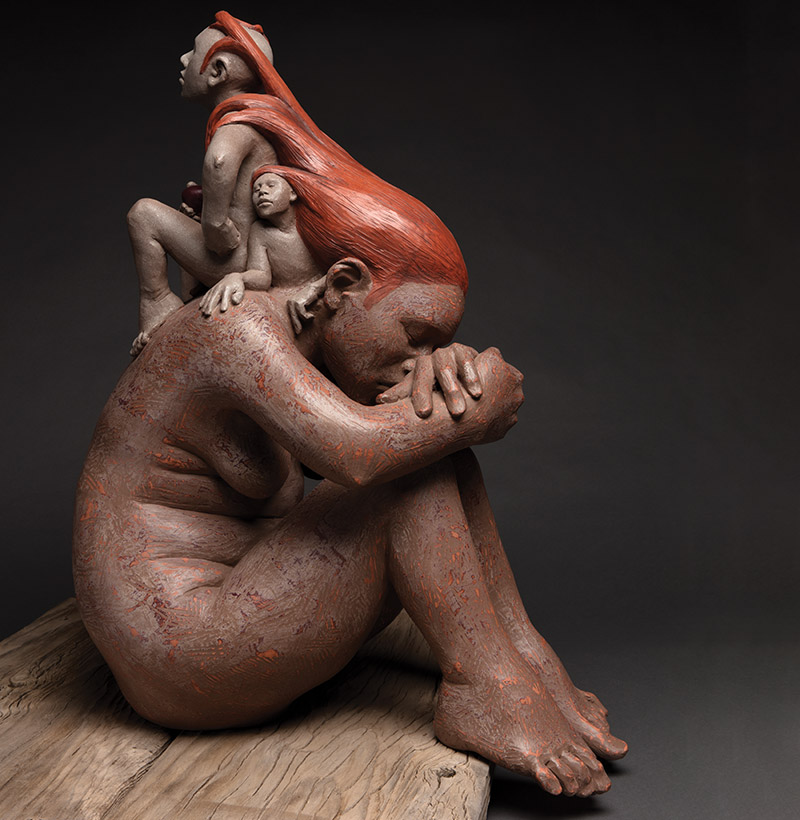
Art New England challenged a selection of museum directors, curators, and educators across the region to muse upon a current topic or share a reflection. The open-endedness of this task resulted in statements that are as unique as the individuals who penned them. Despite varying institutions, locations, perspectives, and identities, there is a unifying thread that connects these participants: they all believe that museums hold a pivotal role in the way we view the world. Museums are both a window and a mirror; both timely and timeless. In her book The Messenger, author Lois Lowry sums it up perfectly, “That is why we have the museum: to remind us how we came, and why. To start fresh, and begin a new place from what we had learned and carried from the old.”
Jami C. Powell
The Hood Museum
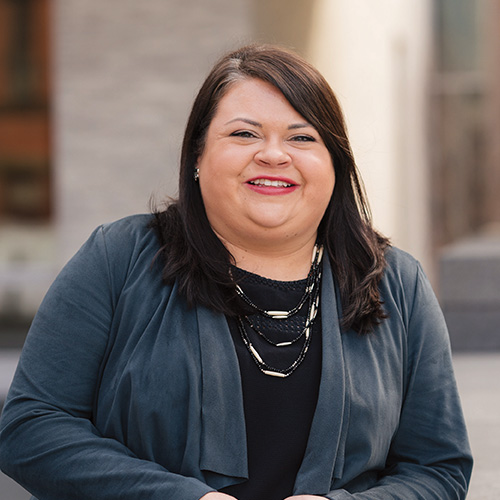
In March 2020, my colleagues and I were finalizing the installation of Form and Relation: Contemporary Native Ceramics at the Hood Museum of Art. As we worked in the galleries the day before we were set to open the exhibition to the public, our director informed us the museum would be closing to the public and our staff indefinitely. At that moment, I imagined we would be closed for a few weeks, maybe a couple of months. I returned to the galleries for the first time six months later, having spent that time at home with my four- and eight-year-old sons, working (or at least trying to work) from home. As I stood alone in the galleries, it felt like the first time I’d experienced silence in months. In this moment, I found myself in the company of Roxanne Swentzell’s Sitting on My Mother’s Back and relating to the work—a commentary on our relationship to Mother Earth—in an entirely new way.
In this sculpture, two young figures sit on the back of their mother who is bent over in exhaustion, a pose I’ve held often this past year. Upon her back, one figure sits upright with an apple in their hand while the other playfully emerges from behind her neck. Both shelter under her hair with little acknowledgement of their provider. Sitting on My Mother’s Back illustrates how Mother Earth sustains and nourishes our lives and cautions us against neglecting this relationship. Another six months have passed, and we still aren’t entirely sure when we’ll be able open the museum to the public. However, as the weather is finally warming in New England, I find myself excited about the possibilities for spending more time within the comfort and care of Mother Nature. I am also reminded that she needs our care, too.
Bonnie Epstein, Ph.D.
RIMOSA
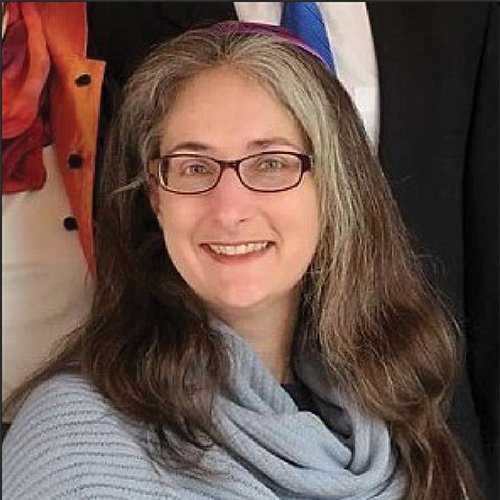
Why do museums still exist? Over the last several decades, a public that once flocked to see art, historic, and scientific artifacts—even live animals—that they couldn’t experience in any other way, can now enjoy these and more online. So, if we have internet, why have museums? Pre-pandemic, the Rhode Island Museum of Science and Art (RIMOSA) answered this question through hands-on, open-ended exhibits and programs that involved manipulating physical materials. Through these interactions, we focused on kindling curiosity and encouraging experimentation—important groundwork for artists, scientists, and other lifelong learners. Then came the lockdown, and a struggle to bring hands-on experiences to those whose educational world was suddenly limited to their computers. It was a global experiment to see if cultural institutions could in fact be replaced by the internet. We discovered that they could not. Virtual could not replace real. Even our distribution of hands-on kits didn’t deliver the same results. At museums, we are immersed. We engage 180° of vision, viscerally understand the size of what we see, use touch and smell as well as sight and sound, interact with objects to feel their weight and texture. But more than that, we experience all of this in public. Museums harness the importance of community. There is power in being in a place that is open to all, of experiencing something with other humans. Museums make connections between people and objects, people and ideas, and weave threads of community between those who experience these objects, ideas, and spaces in common.
Jason Vrooman and Ken Pohlman
Middlebury College Museum of Art

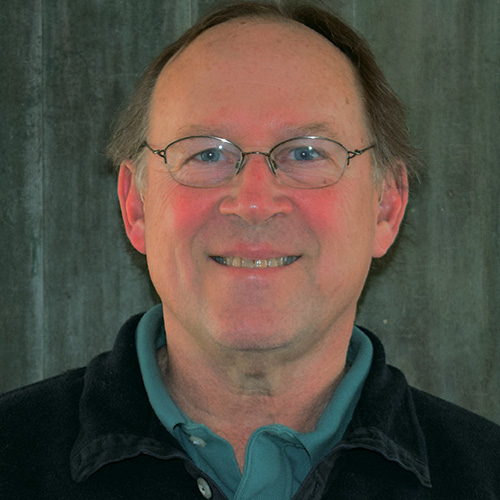
Chief curator Jason Vrooman and exhibit designer Ken Pohlman discuss the collaboration necessary to reinstall the Middlebury College Museum of Art’s permanent collection galleries in just one year.
Jason: Assembling a team of curators, educators, a registrar, and an exhibition designer was essential to accomplishing our goal of telling a more inclusive story of artistic creation. We decided early on to embrace a thematic approach, clustering artworks from distinct times and places under broad categories such as People & the Planet, Ritual & Devotion, and Intercultural Connections.
Ken: I knew that an uncluttered and flexible design would be necessary to support visitors ‘experience of these multiple narratives. I also advocated that a “less is more” mantra would encourage visitors to slow down and look for similarities as well as differences between the juxtaposed works. Trading my signature deep wall colors for light, warm gray walls provided a receptive background for a greater range of works and improved contrast for our labels.
Jason: That contrast was important to our goal of being more physically accessible. Ken enlivened these neutral walls with strategically placed colorful panels that draw visitors’ attention to artworks they support—most of which were created by women, LGBTQ, and BIPOC artists. On a practical level, these panels facilitate efficient rotation of works, allowing us to refresh the galleries with new perspectives on a regular basis. This multiplicity of artists’ voices also encouraged us to rethink our interpretive strategy. By inviting a wide variety of authors (especially students) to write labels and encouraging anyone to add their own responses online, we hope that when we reopen to the public, visiting Middlebury’s museum will feel more participatory and inclusive.
Amy Smith-Stewart and
Namulen Bayarsaihan
The Aldrich Contemporary Museum

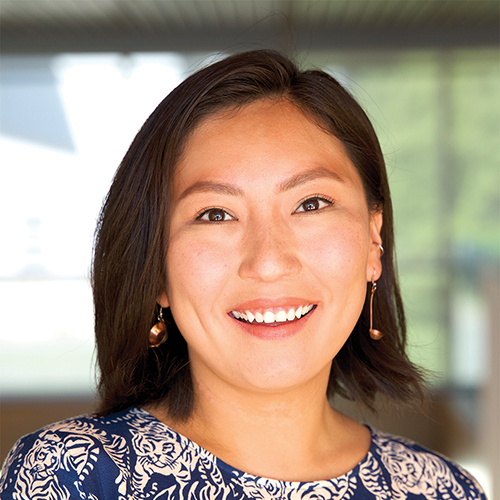
During this unprecedented year, we wanted to create a platform that gave our audiences access to a tangible art experience beyond our walls while also providing additional support to artists outside our more traditional formats. Inspired by the pandemic’s isolation and challenges, we launched The Aldrich Care Box, a unique collaborative project between the education and curatorial departments, organized by myself, senior curator, and my colleague Namulen Bayarsaihan, director of education. The Aldrich Care Box is a year-long traveling exhibition, unbound to a physical space, that contains a series of hand-scaled objects we commissioned made by five artists—Ilana Harris-Babou, Clarity Haynes, Athena LaTocha, Curtis Talwst Santiago, and James Allister Sprang. The objects explore themes specific to this unparalleled moment: notions of care, loss, intimacy, and healing. The public is invited to check out one of the five Boxes (there is no fee to participate) at the Museum’s front desk and experience them for up to one week. Inside each Box are objects that represent a diverse range of materials, methods, and approaches; some are interactive, engaging different sensorial experiences like sound and touch, and some will even change over the course of the project’s duration. The Boxes are modeled after other examples of traveling art, such as the shrines, portable alters, and relics of the medieval era and the Fluxus Boxes from the 1960s–70s. Our hope is that the Boxes will provide solace and agency and even foster a sense of connectivity and community. When the project comes to an end, the “patina” of its use will record the relationships built between artist, object, and participants.
Michael Komanecky
Farnsworth Art Museum
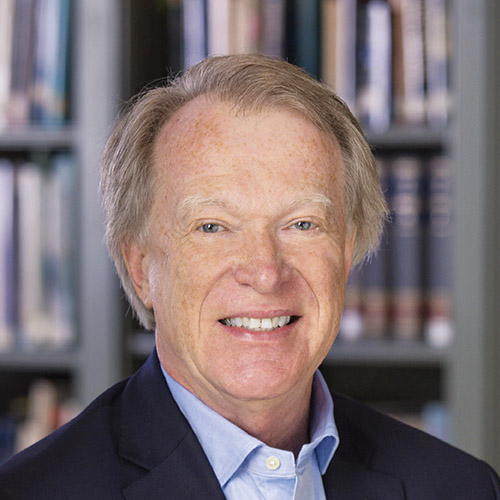
The Farnsworth Art Museum is a special place. One reason is that it was founded by a woman, through the bequest from the nearly lifelong Rockland, Maine resident, Lucy Copeland Farnsworth (1839–1935). Another is that it has the distinctive mission of celebrating Maine’s role in American art. What may seem narrow or even parochial, the museum’s mission derives from the important role of the American artists who over the course of two centuries have come to live or work in Maine. What Maine had to offer was abundant subject matter: scenic harbors and islands, powerful rivers, lush forests, and accessible mountains. The state’s proximity to art centers in Boston and New York as well as the state’s simple lifestyle and affordability were inducements, too.
In 1918, at the age of 79, Lucy Copeland, the last surviving member of a prosperous merchant family, wrote to a Portland law firm to begin preparing her will. It contained three specific provisions for the use of her estate of more than one million dollars: open her lifelong home to the public, open an art museum in her father’s name, and establish a library also in her father’s memory. The Farnsworth Homestead, as it is known, is the only historic home open to the public in Rockland. The library remains the only publicly accessible collection in Maine devoted solely to art. Lucy thus dedicated her fortune to creating a museum in what was a small, somewhat isolated, and largely working-class community in Midcoast Maine. She clearly felt a strong connection to her community, offering it something that likely would not have happened otherwise. She was one of the very few women in America who founded art museums in the early 20th century.
Lucy Farnsworth lived a modest life, centered in Rockland, and tied to matters of family and business in the town she called home. By all accounts, she was a formidable woman, committed to managing the family’s affairs after the deaths of her father and mother, and sure of her decision to dedicate the rewards of their prosperity to giving the people of her community the opportunity to make art a part of their lives. In 2023, the Farnsworth will celebrate its 75th anniversary, striving to deepen the ties to the community of which it is a part, and for the benefit of the community of visitors from across the country and indeed the world.
Lindsay Houpt-Varner, Ph.D.
Rokeby Museum
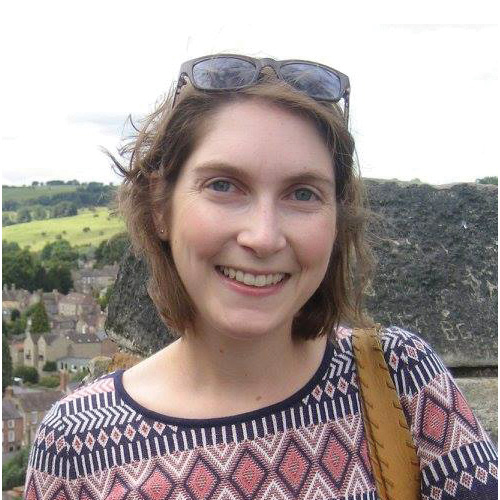
I began as director of Rokeby Museum in September 2020. Starting a new position in a pandemic has its challenges; however, I was impressed at the Museum’s ability to adapt to the ever-changing circumstances surrounding COVID-19. When I arrived, the Museum was open to the public with precautions in place and the Museum was finding ways to support their 2020 goals, including the introduction of a resident artist program.
A previous visit to Rokeby peaked Courtney Clinton’s interest in Rachael Robinson Elmer (fourth generation Rokeby resident) and her artistic career at the turn of the 20th century. With the pandemic preventing Courtney from visiting in person, she took inspiration from Rachael’s early education via a distance-drawing course to develop her project. Released over six weeks and using Rokeby’s collections, Courtney created exercises based on Rachael’s 1890s drawing course. The posts introduced Rachael’s lessons to a modern audience and shared her journey to becoming a recognized 20th century illustrator.
While interviewing for my new role here, I fell in love with Rachael’s story and art and eagerly looked forward to their weekly release. Once at Rokeby, I familiarized myself with the collections and was drawn to Rachael’s artwork where we can trace her artistic process from sketches to drafts, to the final publications. The depth of her commercial artwork is the inspiration for our 2021 exhibit A Modern Artist: The Commercial Art of Rachael Robinson Elmer. We look forward to sharing the story of this talented artist with visitors and hope for a return to normality.
Lauren Szumita
Fitchburg Art Museum
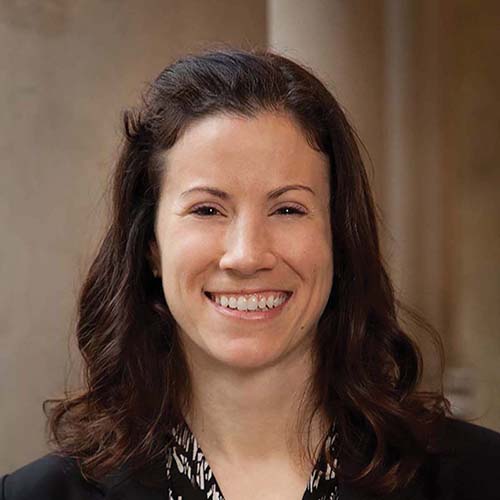
What does it mean to be a museum? What does it mean to be of service to our community? How do we define our community? Those are some of the questions I have been grappling with in my first few months as curator at the Fitchburg Art Museum, and I know these questions resonate for many of my colleagues. One recent and ongoing initiative, Fitchburg Families First, at FAM seeks to address the immediate needs of our neighbors during the pandemic with a team of volunteers distributing relief packages of food, personal care items, and school supplies to the public. This, it seems, is the embodiment of being “of service to our community,” lifting each other up in times of need.
But as a curator, how do I connect the basic needs of humanity, the resources needed in our immediate neighborhood, and art? I have been thinking a lot about what my role is, not just at this institution, but as a member of society. While “kids can’t eat crayons” (as was quoted at the inception of the program mentioned above), art does play a role in the growth, stimulation, and healing of humanity. As we emerge from the depths of the pandemic and amid growing calls for social justice and reform, distress about our current situation is tempered by glimpses of hope and optimism for the future. Major changes in equity, hierarchies of power, and social and political structures are afoot, but they require sustained and diligent effort. I suppose figuring it out is on the agenda for next week.
Shana Dumont Garr
Fruitlands Museum
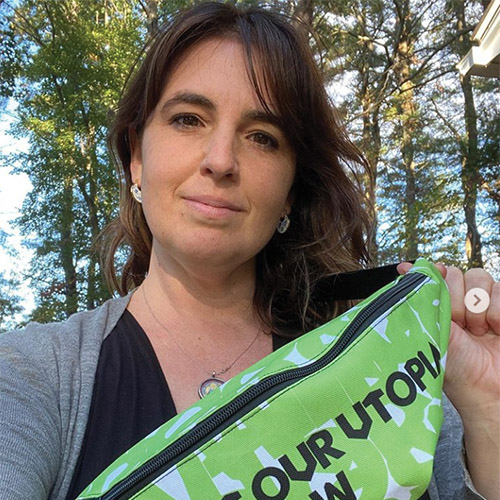
In 2020, art helped me make sense of the confusion, loss, and collective reckoning with our national sins—particularly white supremacy. Creativity and compelling objects allow us to approach difficult subject matter in organic ways. As a curator of both contemporary and historical art, I am fortunate to have this primary means to connect with others.
I vowed to colleagues to prioritize advancing the voices of marginalized peoples during the heartbreak and turmoil of last summer. The exhibition I curated, Piecework: Resistance and Healing in Contemporary Textile Art, played a big role in making my intention a reality.
In addition to loaned works, each of the four artists in Piecework created an intervention in response to the museum collection.
Alicia Henry is an American artist based in Nashville, Tennessee, and she responded to a series of painted portraits. Fruitlands Museum has a significant collection of 19th-century American portraits, yet to our current knowledge, Black artists are not represented in the museum’s holdings. This type of omission in a museum collection contributes to an erasure of certain histories—whose stories are preserved, and whose are left out? Henry created three new works which share her unique vision and point to that absence. Her Untitled, 2021, responds to the 1832 portrait of Dolly Hackett by Ruth and Samuel Shute, frontal and dazzling with a huge hair comb and floral patterns. Henry’s responsive piece shares the striking symmetry and frontality. The figure stands larger than life, framed by black leaves, embodying resilience, renewal, and hope.
Carey Mack Weber
Fairfield University Art Museum
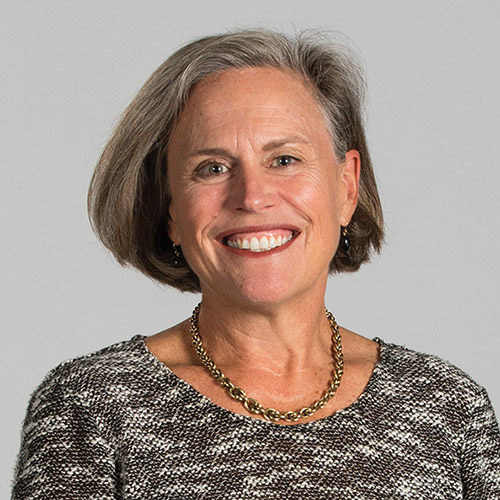
Oh, what a year. The Fairfield University Art Museum has been closed to the public since last March, and open for the university community since September. We are not sure when we will be allowed to fully re-open our doors, but we continue to mount important exhibitions, and have made everything we do available online.
I thought about this print by Laurie Simmons frequently during the past year for several reasons. Part of a series of miniature scenes in which dolls present a critique of modern women’s roles, it refers to suburban isolation, and the crushing work of being a homemaker. The idea of being trapped and isolated in your home, of being literally crushed by your house, resonated with me during the past year of isolation, as I am sure it does with many of you as well. This Simmons work is also a recent acquisition, having been gifted by the artist just a few months before we locked down. I thought about it in relationship to the museum’s small but growing collection of contemporary art as I pursued other gifts for the museum, an enterprise which was complicated by the pandemic.
Finally, I also thought of Simmons’s work in the context of a recent exhibition, Made in Connecticut, at the Wadsworth Atheneum, which celebrated 25 years of the CT Art Trail (of which I serve as president). Artist and exhibition curator James Prosek, the team at the Wadsworth, and I managed to pull this off with the cooperation of all 22 member museums, during the pandemic! It was a wonderful spirit lifting celebration of the arts in Connecticut.
Sarah Montross
deCordova Sculpture Park and Museum
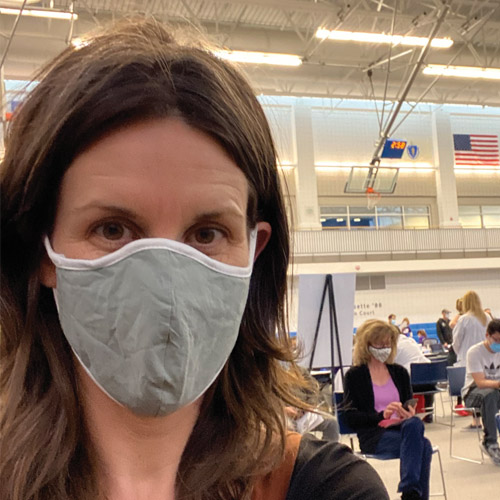
At deCordova Sculpture Park and Museum in early June 2021 we will be opening a monumental installation by artist Jeffrey Gibson in our Sculpture Park. Gibson’s installation is inspired by the pre-Columbian earthen architecture of Cahokia and will look like a massive psychedelic spaceship has landed on our grounds. The artist, Eric-Paul Reige (Diné), who is a gay Indigenous man (Mississippi Choctaw Cherokee), will curate live performances on and around the sculpture, starting with an event on June 4. This will be the first live performance I’ve seen in person since the pandemic and I’m already feeling the relief, exhilaration, but also sadness for the time and lives lost. All of those feelings exist simultaneously. This October 2021, one of the indoor shows I’m working toward titled New Formations will open, which is inspired by a group of amateur photographs donated to deCordova by collector Peter Cohen that show people joining together in procession, dancing, or arranging their bodies into elaborate formations, like “human pyramids” on the beach. Stretched limbs and arched bodies lie atop each other, connect, and intersect in playful, intimate ways. New Formations will feature contemporary artists whose work similarly expresses our need for new rituals, ways of gathering, and connecting with one another, particularly as we start to emerge from the most isolated period of the pandemic. With these projects, I’m thinking now about how art can bring people together again, to dance, to move, and be moved.
Art New England hopes these musings offer inspiration and allow for a moment of your own reflection on the role of museums in your life. Before your visit, please see the individual institution’s website for up-to-date hours of operation, admission, and safety protocols.
